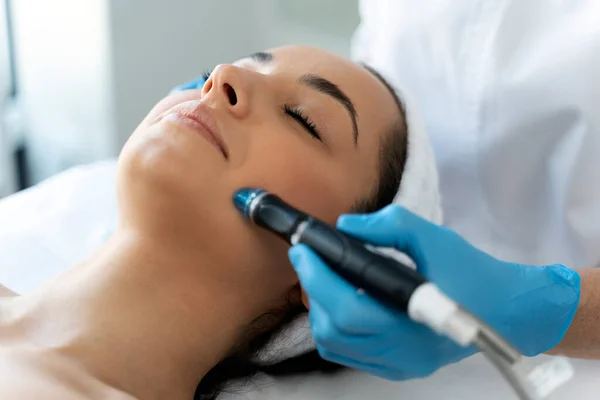In the pursuit of ageless beauty, individuals often turn to cosmetic procedures to reverse the hands of time. Dermal fillers have emerged as a popular choice, promising a non-invasive remedy to restore volume, reduce wrinkles, and enhance facial contours. However, before embarking on the path to rejuvenation, it is crucial to be armed with comprehensive knowledge to make informed decisions. This article delves into the intricacies of dermal fillers, shedding light on what prospective recipients should know before taking the plunge.

What are Dermal Fillers?
Dermal fillers represent a category of injectable substances designed to augment facial features and diminish signs of aging. Unlike their neurotoxin counterparts, such as Botox, which relax muscles to reduce wrinkles, fillers work by adding volume to specific areas. Common substances include hyaluronic acid, calcium hydroxylapatite, poly-L-lactic acid, and polymethylmethacrylate beads.
Types of Dermal fillers
There are four main types of dermal fillers:
- Hyaluronic acid (HA)
HA is a naturally occurring substance in the skin that helps to keep it plump and hydrated. HA fillers are the most common type of dermal filler and are available in a variety of formulations to address different skin concerns. They are typically used to treat moderate to deep wrinkles, folds, and lines, as well as to plump up lips and add volume to cheeks. HA fillers are temporary and typically last for 6 to 12 months.
- Calcium hydroxylapatite (CaHA)
CaHA is a mineral-like substance that is found naturally in bones. CaHA fillers are a newer type of dermal filler that is becoming increasingly popular. They are typically used to treat deep wrinkles and folds, as well as to contour the face. CaHA fillers are semi-permanent and typically last for 12 to 18 months.
- Poly-L-lactic acid (PLLA)
PLLA is a synthetic substance that is used to stimulate collagen production in the skin. PLLA fillers are typically used to treat moderate to deep wrinkles and folds, as well as to improve skin texture. They are also used to plump up lips and add volume to cheeks. PLLA fillers are semi-permanent and typically last for 2 to 3 years.
- Polymethylmethacrylate (PMMA)
PMMA is a synthetic substance that is used to fill in deep wrinkles and folds. PMMA fillers are typically used to treat moderate to deep wrinkles and folds, as well as to contour the face. They are permanent and do not dissolve over time.
The best type of dermal filler for you will depend on your individual needs and goals. It is important to consult with a board-certified dermatologist or plastic surgeon to discuss your options and choose the best filler for you.
The Purpose of Dermal Fillers
Before delving into the considerations, it’s imperative to grasp the primary objectives of opting for dermal fillers. These may range from addressing fine lines, wrinkles, and folds to restoring lost volume in areas like the cheeks and lips. Understanding one’s aesthetic goals is fundamental in ensuring the procedure aligns with personal expectations.
Factors to Consider
1. Choosing a Qualified Practitioner
The expertise of the professional administering the dermal fillers plays a pivotal role in the outcome. Seek practitioners with specialized training in dermatology or plastic surgery, and preferably those affiliated with recognized medical associations. Before getting dermal fillers, thorough research on the practitioner’s credentials, reviews, and before-and-after photos is paramount.
2. Types of Dermal Fillers
Not all fillers are created equal. Each type serves a distinct purpose, and understanding the differences is crucial for optimal results. Hyaluronic acid fillers, for instance, are temporary and suitable for various areas, while calcium hydroxylapatite provides longer-lasting effects. Discussing the specific filler type with the practitioner ensures a tailored approach to individual needs.
3. Potential Risks and Side Effects
While dermal fillers are generally considered safe, like any medical procedure, they carry inherent risks. Bruising, swelling, and redness are common side effects that typically subside within days. However, more serious complications, such as infection or allergic reactions, may occur. Understanding these risks and having a candid discussion with the practitioner about mitigating factors is integral to informed consent.
4. Duration of Results
Dermal fillers are not a permanent solution. The longevity of results varies based on the filler type and individual factors. Before getting dermal fillers, it’s essential to discuss the expected duration of the chosen filler and whether maintenance sessions will be required. This ensures realistic expectations and allows for adequate planning.
5. Preparation and Aftercare
Preparing for dermal filler injections involves more than just scheduling an appointment. Certain medications and supplements, such as aspirin and fish oil, can increase the risk of bruising. Consulting with the practitioner before getting dermal fillers about necessary precautions and post-procedure care is vital for a smooth and uneventful recovery.
What Are The Benefits of Dermal Fillers?

Dermal fillers can be used to:
- Add volume to the cheeks, lips, and temples
- Smooth out wrinkles and lines
- Improve the appearance of acne scars
- Plump up the hands
The Procedure Itself
What to Expect During the Injection
The actual dermal filler procedure is relatively swift, often taking less than an hour. After a consultation to determine the desired outcome, the practitioner will mark the injection sites and cleanse the area. A topical anesthetic may be applied to minimize discomfort. The filler is then injected using fine needles or cannulas, with the practitioner molding and massaging the product for optimal distribution.
Pain and Discomfort
While the majority of individuals experience minimal pain, discomfort thresholds vary. The use of topical anesthetics or fillers with built-in anesthetic properties can enhance the overall comfort during the procedure. Communicating openly with the practitioner about pain expectations ensures a more tailored and positive experience.
Post-Procedure Care
Immediate Aftermath
After getting dermal fillers, it’s common to experience mild swelling and bruising. Applying ice packs and avoiding strenuous activities can help alleviate these symptoms. Patients are typically advised to refrain from excessive touching or massaging the treated area to prevent displacement of the filler.
Long-Term Care Considerations
Beyond the immediate aftermath, long-term care is pivotal for maintaining optimal results. Sun protection, a healthy skincare routine, and regular check-ins with the practitioner are essential aspects. Understanding the significance of these measures before getting dermal fillers contributes to prolonged satisfaction with the outcomes.
Financial Considerations
Cost Factors
The financial aspect is a significant consideration before getting dermal fillers. The cost varies based on factors such as the type of filler, the number of syringes needed, and the practitioner’s expertise. It’s crucial to obtain a comprehensive quote that includes all associated fees to avoid unexpected financial implications.
Insurance Coverage
In most cases, dermal fillers are considered elective cosmetic procedures and are not covered by insurance. Prospective recipients should be prepared to bear the entire cost. Exploring financing options and payment plans with the practitioner’s office can help alleviate the financial burden.
What Are The Expert Reviews of Dermal Fillers?
Experts generally agree that dermal fillers are a safe and effective procedure when performed by a qualified dermatologist or plastic surgeon. However, they also caution that there are some risks involved, and that patients should be aware of these risks before undergoing the procedure.
Here are some expert reviews of dermal fillers:
- “Dermal fillers are a safe and effective way to add volume to the face, smooth out wrinkles, and plump up lips. However, it is important to choose a qualified dermatologist or plastic surgeon who has experience with this procedure.” – American Society of Plastic Surgeons
- “Dermal fillers can be a good option for patients who are looking for a non-surgical way to improve their appearance. However, it is important to have realistic expectations about the results of the procedure.” – American Academy of Dermatology
- “Dermal fillers are a popular cosmetic procedure, but it is important to be aware of the risks involved. Patients should consult with a qualified dermatologist or plastic surgeon before undergoing the procedure.“
Conclusion
In conclusion, the decision to undergo dermal filler injections is a personal one that necessitates thorough research and consideration. From choosing a qualified practitioner to understanding the intricacies of different filler types, the journey involves multiple facets. Armed with the knowledge of potential risks, duration of results, and post-procedure care, individuals can approach the experience with confidence and realistic expectations. The pursuit of ageless beauty, when undertaken with prudence, can yield gratifying results and a renewed sense of self.
Also Read: Is Raegan Medgie Married To Jamie Monos? Family Tree And Nationality






